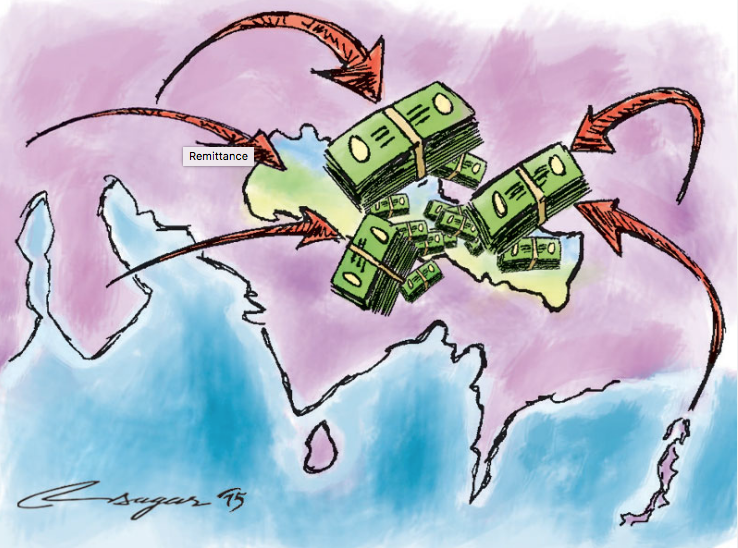Every year, around $600 billion are being transferred by foreign migrant workers to help their families in a home country, the World Bank estimates (2018). This type of money transfer is called a remittance. When sending money across, however, a large part of it has to be sacrificed in form of fees. The fees vary a lot based on the service provider, geographical location and currencies involved. The global average per transaction is as large as 7.1% (World Bank, 2019).
Major incumbents inside the industry are banks and money transfer operators (MTO’s). If two banks have no direct connection, stopover services are being used, which adds more time and fees to a transaction. The most popular MTO’s, carry huge costs to sustain a network of large number of agents globally. So, for example Money Gramm works with 350000 agent locations and Western Union with around 500000 physical spots around the world (The Economist, 2019).
Being large in size, it is difficult for such organisations to implement changes inside the oftentimes outdated systems and business models. This plays out to the benefit of entrepreneurial fin-tech start-ups, who can show a greater agility and challenge the core players. In the end, if Skype could enable people to make free audio or video calls disrupting the telecom industry, why should not be the same possible inside the remittance market?
The first bricks are already laid. The newcomer-companies lean on new business models, partnerships and technology to provide a greater value.
Azimo, for example, offers near to instant transfers by holding funds in most currencies around the world.
Another company, Remilty, partners with cash-pickup locations, owns no physical outlets and uses technology (only digital transfers) to lower the costs.
Besides that, blockchain developers have created networks, which connect businesses, users and banks in order to enable funds transaction across the world. Inside such a network any currency can be transferred into a cryptocurrency, sent to another institution and re-transferred into the needed currency on the other side within seconds for a little to no fee. Examples to look at would be the Ripple Network, connecting 200+ financial organisations and Stellar, who recently partnered up with IBM to pursue the same goal (RippleNet, 2019).
In general, the future of money transferring appears to me as a bright picture. With rise of technology, networking and growing mobile penetration – the money transferring will inevitably become more cost and time efficient to say the least or almost free and instant to say the most.
The author declares that he has no relationship with any of the mentioned organisations and there is no conflict of interest.
Sources:
The Economist (2019). The cost of cross-border payments needs to drop. Derived from: https://www.economist.com/leaders/2019/04/13/the-cost-of-cross-border-payments-needs-to-drop
The Economist (2019). Fintech takes aim at the steep cost of international money transfers. Derived from: https://www.economist.com/finance-and-economics/2019/04/11/fintech-takes-aim-at-the-steep-cost-of-international-money-transfers
World Bank (2019). Record High Remittances Sent Globally in 2018. Derived from: https://www-worldbank-org.eur.idm.oclc.org/en/news/press-release/2019/04/08/record-high-remittances-sent-globally-in-2018
RippleNet (2019). A Global Payments Network. Derived from: https://www.ripple.com/ripplenet/


Great article!
Technology can definitely do so much more to ease money transfer across borders.
One company that I would like to mention in that sense is TransferWise, which offers an easy and cheaper way of transferring money between currencies. Basically it works by TransferWise having bank accounts in all kinds of different countries. You send your EUR to their EUR-account and they will send you USD from their USD-Account, converted with the ‘real’ exchange rate. They only take a flat-fee as commission.
https://transferwise.com/nl